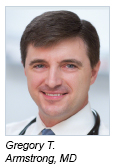In a study reported in the Journal of Clinical Oncology, Gregory T. Armstrong, MD, of St. Jude Children’s Research Hospital in Memphis, and colleagues assessed the frequency of major cardiac events and cardiovascular risk factors among adult survivors of childhood cancer and their siblings.1 They found that survivors were at greater risk of cardiac events and had more risk factors, with the findings suggesting an opportunity to reduce cardiovascular risk by addressing modifiable risk factors, and hypertension in particular, in these patients.
Study Details
The study included 10,724 5-year survivors of childhood cancer and 3,159 siblings in the Childhood Cancer Survivor Study. Participants were assessed for prevalence of hypertension, diabetes mellitus, dyslipidemia, and obesity and the incidence and severity of major cardiac events, including coronary artery disease, heart failure, valvular disease, and arrhythmia.
Median age at last follow-up was 33.7 years (range, 11.0–58.9 years) at a median of 25.6 years (range, 7.4–39.3 years) from cancer diagnosis in survivors and 36.0 years (range, 7.1–62.6 years) in siblings. Fifty-two percent of survivors and 48% of siblings were male, and 88% of both groups were white. The most common childhood cancer diagnoses were acute lymphoblastic leukemia (30%), Hodgkin lymphoma (13%), and Wilms tumors (10%). Among survivors, 26% had received chest-directed radiotherapy and 39% had received anthracycline chemotherapy.
Risk for Survivors vs Siblings
Among survivors, the cumulative incidence of grade 3 to 5 cardiac events by 45 years of age was 5.3% for coronary artery disease, 4.8% for heart failure, 1.5% for valvular disease, and 1.3% for arrhythmia. The cumulative incidence of cardiac events was significantly associated with exposure to cardiotoxic therapies (P < .001). Among siblings, the cumulative incidence of grade 3 to 5 events by 45 years of age was 0.9% for coronary artery disease, 0.3% for heart failure, 0.1% for valvular disease, and 0.4% for arrhythmia.
Two or more cardiovascular risk factors were reported by 10.3% of survivors and 7.9% of siblings; 3.7% vs 2.4% had diabetes, 14.9% vs 9.6% had hypertension, 8.9% vs 6.0% had dyslipidemia, and 21.7% vs 23.1% had obesity. The prevalence of cardiovascular risk factors increased with age among survivors and was significantly greater than that for siblings at age 50 years for hypertension (40.2% vs 25.5%, P < .001) and dyslipidemia (23.0% vs 13.6%, P = .008), whereas the prevalence of obesity was greater among siblings (25.2% vs 31.3%, P = .02).
Comparisons Among Survivors
Among survivors exposed to chest-directed radiotherapy, the risk for each type of cardiac event increased with increasing number of cardiovascular risk factors (P < .001 for trend) as did risk for heart failure among those exposed to anthracycline (P < .001 for trend). The presence of hypertension alone significantly increased risk for coronary artery disease (relative risk [RR] = 6.1), heart failure (RR = 19.4), valvular disease (RR = 13.6), and arrhythmia (RR = 6.0) in patients exposed to chest-directed radiotherapy and risk for heart failure (RR = 12.4) in those exposed to anthracycline therapy (all P < .001).
Other significant associations for individual risk factors were dyslipidemia and obesity alone for coronary artery disease, diabetes alone for heart failure, dyslipidemia alone for valvular disease, and diabetes alone for arrhythmia in patients exposed to chest-directed radiotherapy and diabetes alone for heart failure in those exposed to anthracycline therapy.
Combinations of risk factors that included hypertension were associated with the highest risk estimates for association with coronary artery disease (hypertension plus diabetes RR = 23.5), heart failure (hypertension plus diabetes RR = 35.3), and valvular disease (hypertension plus obesity RR = 20.6; all P < .001) after exposure to chest-directed radiotherapy.
Analysis of Relative Excess Risk
An analysis of relative excess risk due to interaction (RERI) was performed to determine whether the interaction effects of radiotherapy or anthracycline treatment with cardiovascular risk factors were more than additive when present together. Survivors treated with chest-directed radiotherapy who developed two or more cardiovascular risk factors, including hypertension had significantly increased RERI for coronary artery disease (RERI = 27.9, 95% confidence interval [CI] = 14.6–51.0), heart failure (RERI = 18.3, 95% CI = 7.6–37.4), valvular disease (RERI = 60.9, 95% CI = 18.0–487.0), and arrhythmia (RERI = 8.6, 1.7– 21.7) and those treated with anthracycline had significantly increased RERI for heart failure (RERI = 11.9, 95% CI = 0.3–29.6), with these findings suggesting potentiation of risk for major cardiac events.
When survivors had multiple risk factors that did not include hypertension, significantly increased relative excess risks due to interaction were not observed for any of the major cardiac events among patients receiving chest-directed radiotherapy or for heart failure among those receiving anthracycline therapy.
In multivariate models, development of hypertension alone (RR = 5.6, 95% CI = 3.2–9.7) or two or more cardiovascular risk factors (RR = 2.4, 95% CI = 1.2–4.9) was significantly associated with cardiac-specific mortality, whereas there was no significant association with diabetes alone (RR = 2.2, 95% CI = 0.8–6.1), dyslipidemia alone (RR = 1.7, 95% CI = 0.7–3.8), or obesity alone (RR = 1.2, 95% CI = 0.6–2.3).
The investigators concluded: “In summary, survivors who received chest-directed radiotherapy or anthracycline chemotherapy are at high risk for serious cardiac events, and when these therapeutic exposures are combined with cardiovascular risk factors, in particular hypertension, risk is significantly increased…. Of note, in individuals treated with chest-directed radiotherapy and who have hypertension, the risk is increased above that expected in a simple additive risk model. These findings reinforce the need for careful screening of adult survivors for early detection of cardiovascular risk factors.” ■
Disclosure: The study was supported by the National Cancer Institute, a Cancer Center Support (CORE) Grant to St. Jude Children’s Research Hospital, and the American Lebanese Syrian Associated Charities. The study authors reported no potential conflicts of interest.
Reference
1. Armstrong GT, Oeffinger KC, Chen Y, et al: Modifiable risk factors and major cardiac events among adult survivors of childhood cancer. J Clin Oncol. September 3, 2013 (early release online).


